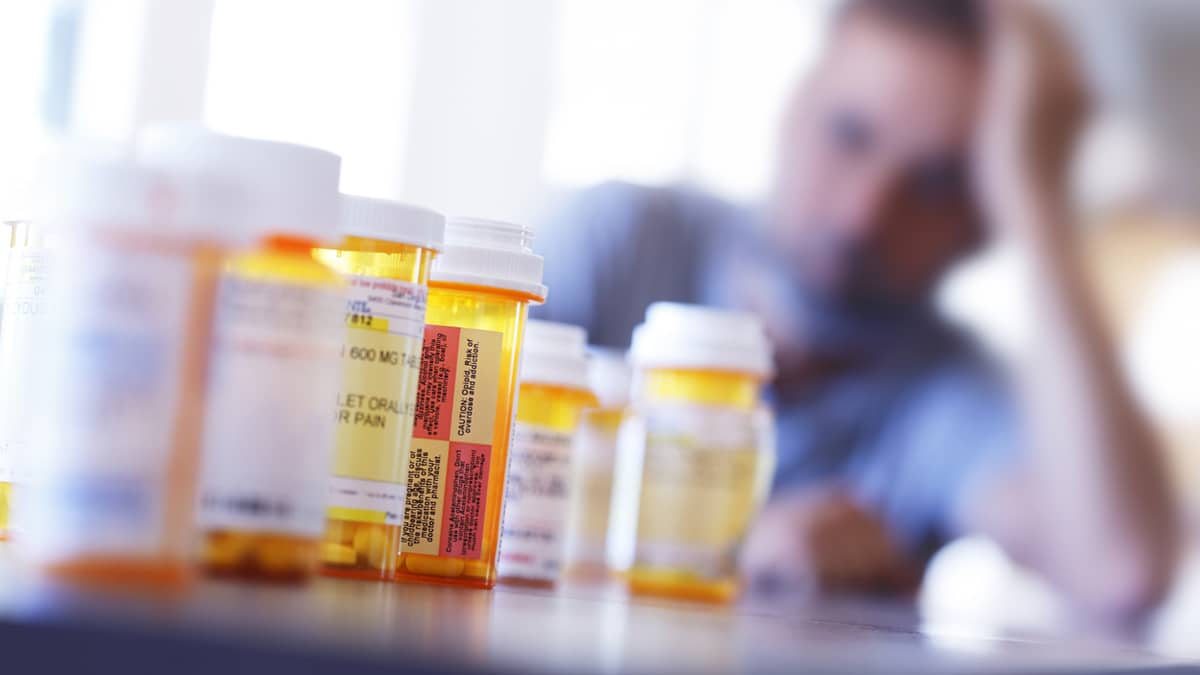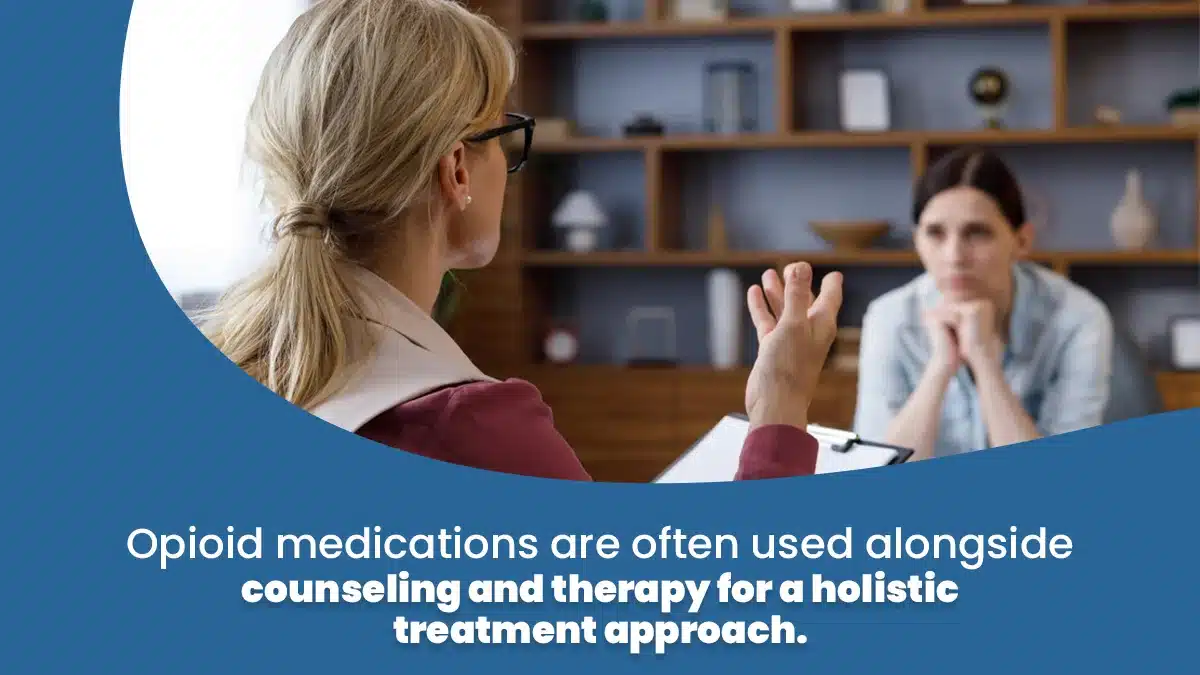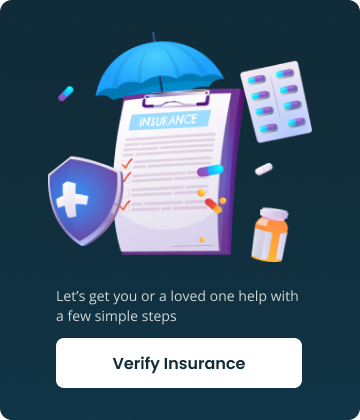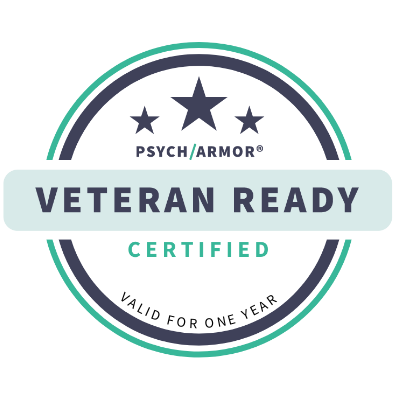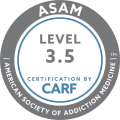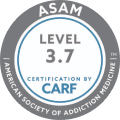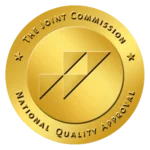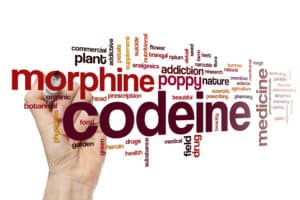
Codeine is a prescription medication that is typically used to manage pain and coughing. It is classified as an opioid, or a narcotic, drug, and it is only considered legal for you to take it if a doctor prescribes it specifically to help treat a diagnosed health condition. Like other opioids, this drug works by altering how the brain perceives pain and discomfort. Due to the effect that it has on the brain, codeine is also considered habit-forming. While there are times when this medication is beneficial to treat certain health conditions, it is essential that anyone who takes it understands the risks involved.
Currently, the opioid epidemic continues with the U. S. Health and Human Services Department reporting that 2.1 million people misused prescription opioids for the first time in 2017. Codeine is one of the most commonly prescribed drugs, and you may find it in prescription cough syrups or in pill form. In some cases, this drug is mixed with other medications, such as acetaminophen, to further help to alleviate pain. Seeing the drug combined with medicine that you can buy over the counter can sometimes generate a false sense of security that the drug is mild.
Understanding the addictive nature of codeine along with the potential for severe withdrawal symptoms can help you to make the right choices regarding the prescriptions you take and to recognize when normal use has transitioned to an addiction.
How Codeine Addiction Starts
For many people, addiction starts innocently. While you might not buy drugs off the street, it is normal to think little of taking a medication that a physician you trust prescribes. While taking the medication exactly as it is prescribed helps you to avoid developing an addiction, it is still possible that you will need to deal with withdrawal symptoms as your body attempts to detox from the drug once you stop using it. In some cases, your physician may recommend that you slowly wean off the drug by taking smaller amounts until you eventually are not taking any at all.
You also need to know that codeine falls within the opiate family, and these drugs alter the way your brain responds to pain. When you use this drug for a short time, these changes are temporary. However, you may still experience symptoms that are associated with withdrawal, such as a temporary increase in your perception of pain. This is why you may find it difficult to stop using the drug on your own. If you continue to use the drug in larger amounts for a long period of time, it is possible for some of the changes that occur within your brain to become permanent.
In addition to physical dependency, you may come to rely upon the other side effects that are associated with this medication. For instance, you may develop anxiety regarding the pain or extreme coughing, and you may begin to enjoy the relaxation that occurs when you take the medication. You might also use the drug to cope with anxiety and stress that occurs from other aspects of your life. If you find yourself taking your prescription painkillers to deal with emotions that are not associated with your pain, then this is a sure sign of addiction.
Your body also develops a tolerance to opioids that gets stronger the longer you use them. Many addictions begin once you start to take more of the drug than what is prescribed; many people increase the amount to generate the same effects that you used to be able to achieve by taking the drug in the proper dosage. When these medications are prescribed, your doctor carefully takes into account factors such as your age, your weight, and your current level of health. Taking more prescription narcotics that are prescribed places you at risk for serious health consequences.
Common Side Effects Caused by Opiates
The side effects that you feel from codeine are very similar to other opiates like morphine. In addition to pain relief, you may feel a sense of euphoria or a state of complete relaxation that many people find enjoyable. Drowsiness is another side effect that you may experience, and this one is often desirable for people who deal with the pain that makes it more difficult for them to sleep normally. However, you should also be aware that drowsiness is one of the more dangerous side effects since it can place you at risk for accidents, and it increases the potential of you experiencing other negative drug interactions.
Dangers of Using Codeine With Other Drugs and Alcohol
When you combine this medication with other types of drugs or alcohol, serious consequences can result. Codeine is a central nervous system depressant that can alter your body’s ability to perform necessary functions such as breathing and regulating your heart rate. When you consume this medication with other drugs or alcohol that also affect your central nervous system, the side effects can become severe enough to be deadly.
According to the University of Michigan, combining codeine with alcohol can lead to a drug interaction that causes life-threatening symptoms such as slowed breathing, a coma, and even death. You can also experience an overdose if you try to mix this medication with other opiates like heroin.
Always make sure your physician knows about any other medications that you take so that he or she can determine if those drugs may have a negative reaction with your prescription pain or cough medications. You must also be honest about your past or present substance use history when you talk to your physician. Addiction is nothing to be embarrassed about, and a healthcare professional can offer you non-addictive medications as alternatives that will not pose a risk for negative drug interactions like codeine can.
Special Concerns Regarding Teen Substance Use
One of the biggest challenges regarding the availability of prescription opiates is that teens and young adults have more access to them. Similar to adults, they may also think that using codeine is safer than street drugs simply because it comes in a prescription bottle. According to the National Institute on Drug Abuse for Teens, misusing prescription cough and cold medicines has gained popularity with youth who are often introduced to the concept through popular music.
When teens misuse prescription cough syrup, they often mix it with soda and drink it socially. If you are a parent concerned about teen narcotic use, you may hear the kids refer to this concoction by street names such as sizzurp, lean, or purple drank. Since teens often change their slang for common drugs and are heavily influenced by music and their peer groups, it is best to occasionally listen in to what your kids are playing on their music player and check in on them when they are with their friends. Since young adults are often still in the experimental stages of substance misuse, catching the problem early helps you get them treatment before they develop a full-blown addiction.
Common Withdrawal Symptoms
Since codeine is classified as a narcotic, you can expect to experience many of the same types of withdrawal symptoms as you would coming off of heroin or morphine. In some cases, particularly those where you have only used small amounts of the drug for a short time, you may only experience mild symptoms such as a headache, nausea, and trouble sleeping. The physically addictive nature of this drug is so strong, that you may even feel these mild symptoms when you have been taking your prescription medications properly.
You should also be aware that the withdrawal symptoms from this drug can also be severe enough to require immediate medical attention such as what you can receive through a professional detox program. You are at greater risk of having severe withdrawal symptoms if you have ever had a relapse from codeine or another type of drug in the past. You may also need professional help getting through the detox part of the recovery process if you have been using large amounts of the drug or been on it for a long period of time.
The severe withdrawal symptoms that you may experience when you attempt to end your addiction include tremors, major abdominal pain, and vomiting. Some people also experience muscle cramps with spasms or even seizures. Emotionally, you may feel intense anxiety or depression that interferes with your ability to perform your normal daily activities.
In some cases, you may exhibit dangerous or aggressive behavior. In the worst-case situation, your heart rate may reach dangerous levels, and your breathing may become labored. If you attempt to stop using this drug on your own and experience any severe withdrawal symptoms, it is imperative that you seek emergency medical attention as these signs can be life-threatening.
How to Get Help With Opiate Detox
While you may think that you can manage the withdrawal symptoms on your own, the truth is that most people eventually begin to feel desperate enough to do anything to make them stop. Sadly, this is the point when most people return to using the drugs and begin to feel hopeless in the face of addiction. While nothing can make the withdrawal symptoms completely go away, you can find relief in an opiate detox program. There, you can receive assistance from professionals who understand how to provide comfort that helps people get through this critical first part of recovery.
In an opiate detox program, you may receive several different types of therapeutic services that help you get past the first few days. When you first enter the program, your health is assessed to determine whether you can benefit from medically assisted detox. This type of treatment may involve using non-addictive medications to manage severe symptoms. For instance, you may benefit from using an anti-nausea medication to control vomiting so that you can focus on healing.
In a detox center, you can also learn how to manage your pain safely. Since many people develop an addiction to opiates due to a diagnosed medical issue that causes pain, your counseling team is used to helping people find alternatives for pain relief that work. Hot and cold therapy, massage, and mindful meditation are a few techniques that you may learn how to use to manage your pain even after you leave detox.
Importance of Treating the Underlying Causes of Addiction
As with most forms of addiction, few people starting misusing codeine without a reason. For the best chances of a long-term recovery, you must work to figure out why you feel the need to use the drug and develop ways to overcome your cravings. Following your initial detox, you can then move into the next phase of treatment by working with counselors to treat the underlying causes of your addiction. While your body will heal on its own, you must also learn how to manage negative emotions, such as anger and anxiety, that interfere with your ability to stay sober.
You may also need to work on healing parts of your life that have been damaged by addiction. For instance, you can attend family counseling sessions to begin to heal your relationships with your spouse, kids, and other important people in your life. You can also work with your counselors to find new activities that are healthier and that helps to fill your time as you begin to transition to a life of sobriety at home.
Codeine appeals to teens and adults who may not realize the serious danger that exists with a drug that is so readily prescribed by physicians. However, all narcotic medications are addictive, and it is important for you to be able to recognize the signs of a growing dependency upon any type of prescription painkiller or cough suppressant. Whether you or a loved one has started to misuse this or any other type of drug, seeking the appropriate treatment helps to manage detox symptoms and offers the support necessary for long-term recovery.



